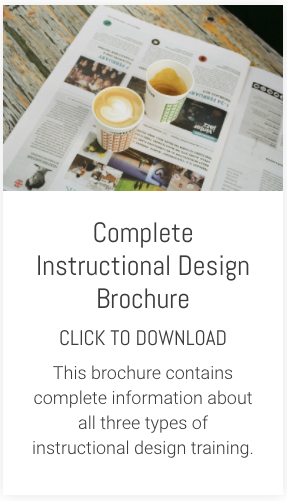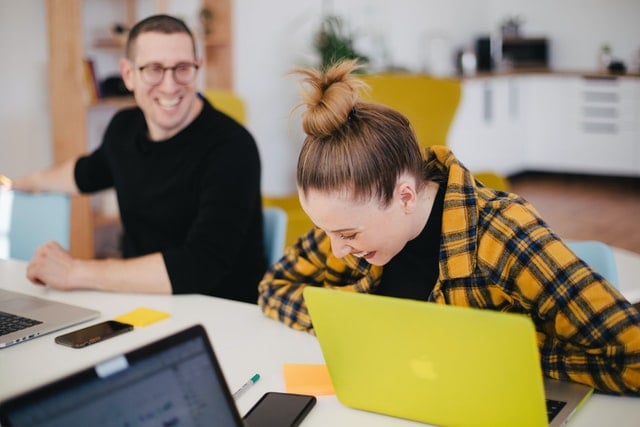Context, they say, is everything. Very true in many areas of life, especially true of instructional design. And just as significant when it comes to performance support. Without carefully considering context (and its close relative integration) you are likely to come unstuck.
I was reminded of this just recently when I re-discovered a wonderful example from Allison Rossett. Her example was written in the 90s, meaning the original tech references are out of date now. Below, you’ll find my (minor) re-working of the example to include current tech references.
But before recounting the example, I want to add a bit of context of my own.
Why context matters
Ever since the arrival of cognitive learning theories, we’ve recognised the importance of context in learning. Viewed through a purely instructional design lens, understanding how learners actually apply their learning in the workplace, will avoid teaching knowledge and skills in the abstract. A clear understanding of the specific ways in which knowledge and skills are being applied, helps you craft a tailored learning experience that closely reflects the workplace reality of the learners.
When thinking about supporting learners after a learning event, understanding that aspect of context is equally important. After all, the content of the support materials will need to be equally well contextualised and tailored.
But you will also want to focus on actual physical surroundings. Literally, where are they when they need that support. At a desk? At the top of an electricity pylon? In a noisy, crowded space?
That’s a much narrower and much more specific aspect of context. But it’s vital because it helps determine what a usable performance support tool needs to look like.
A job-aid printed on a piece of paper won’t be very effective at the top of a pylon. Audio support won’t be much help in a noisy, crowded workspace. Granted, these are obvious, simplified examples. But you get the idea.
Consider integration for EVEN greater effectiveness
Within that aspect of context, you also need to consider integration. What do I mean by that? Essentially, it’s about how embedded the support is within the task. Making sure that learners can get to the support they need as quickly and easily as possible, while still taking into account the type of performance support tool that will make most sense in that context.
In some cases, you only need to think about these questions for a minute or two. The answer will stare you in the face. Other times, it’s a bit more nuanced and you might need to work through a few options and possibilities before you reach the best result. Other times, you may end up having to compromise a little bit.
And this is why I like Rossett’s example, so much. It takes an example that everyone understands and readily walks us through many of the considerations connected to context and integration. So, here’s my slightly updated version of her example…
Context and integration example
Imagine that you have to drive to an event on the other side of the town where you live. Your brother works on that side of town and knows it well; but you rarely have cause to go there and only a very limited experience of driving around there.
How might you go about finding your way there?
Look at the city map you keep in your home office.
Not very integrated and only tailored in the sense that it’s a map of the place you need to drive in.
Go to Google Maps and have it map out the route. Print out the results to have with you in the car.
There is significant tailoring here. You get the exact route that you need. The support is integrated. But dangerously so. Glancing at the print out of the directions while driving is not recommended!
Ask your brother for directions
Tailored. And depending on your memory and the accuracy of his directions, this could work quite well. But not hugely integrated.
Pull out a city map that you keep in your glove box. Look at this before your journey and keep consulting it as you drive.
As with the map in the home office, not very tailored. As with the printed directions, integrated but dangerously so.
Use your sat nav
Lots of tailoring (and adapting). Deeply integrated into the task.
Of course, in this example most people will see immediately the benefits of the sat nav over all other options. This is one of those ‘staring you in the face’ decisions.
However, just to be a little bit contrarian, I continue to be a sat nav refusenik. I could share multiple examples where I have sat as a passenger and watched people make the dumbest of navigation decisions because they have switched off their navigation brain and rely slavishly on a sat nav master. Another post for another day, I think!
But in conclusion, whatever decisions you make regarding context and integration, the important point to remember is that the more embedded, intuitive and tailored you can make that support solution, the more your learners are likely to see value in it and engage with over and over.
You can read a more personal view of my journey to create an AI-driven performance support tool in my weekly PerformaGo Diary.







